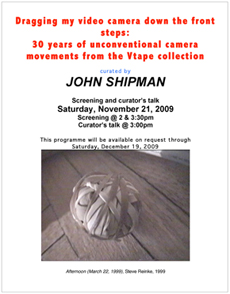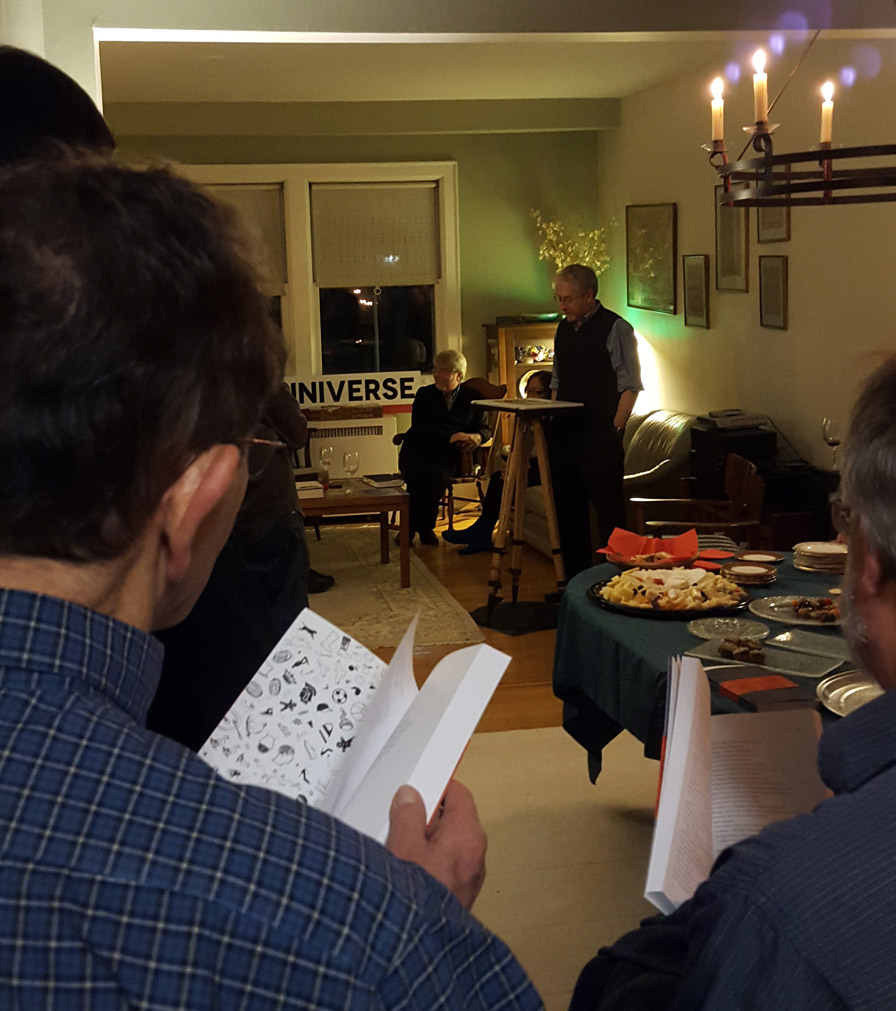30 years of unconventional camera movements from the Vtape collection · 2009
 This essay was written for a project I curated at Vtape that included a 60-minute program of eight short videos by Leslie Peters, Jeremy Drummond, Vanessa Renwick, Gunilla Josephson, Tom Sherman and Jean Piche, Samuel Chow, Steve Reinke and Martha Wilson that used unusual camera positions and movements to create a slightly different visual gravity: showing things improbable but viscerally informative.
This essay was written for a project I curated at Vtape that included a 60-minute program of eight short videos by Leslie Peters, Jeremy Drummond, Vanessa Renwick, Gunilla Josephson, Tom Sherman and Jean Piche, Samuel Chow, Steve Reinke and Martha Wilson that used unusual camera positions and movements to create a slightly different visual gravity: showing things improbable but viscerally informative.
•
Anxious, thoughtful video artists hear many contradictory whispers about how they might position and move a video camera. Visual memories of camera movement from the hours, days and months of watching commercial television and movies disturb their optical unconscious. Whispers pursuing them range from levelness, verticality, and not crossing the index vector line, to the conventions of various genres, and other axioms on camera positions and movements. Altogether they form a formidable presence and usually an effective predictor of camera positioning and movement. Perhaps the loudest whispers are the ones about levelness and verticality — the viewers’ expectations about the relationship between the projected image and the centre of the Earth.
In 1609, Galileo used a primitive telescope that enable him to conclude that there were mountains on the Moon, and small bodies orbiting Jupiter. Encouraged by these observations, he published his Dialogue on the Great World Systems (1632) in which he asked his readers to consider that having the Earth rotating around the Sun did not need to compromise their spiritual beliefs. Galileo, a champion of problematic views and a user of a visual apparatus, re-emerges here in the 21st century with a determined but cryptic perspective on the conventions of camera movement. He is joined by his foil from the 1600s, Simplicico, in an imagined dialogue about the movement of video cameras with respect to the centre of the Earth (1):
Simplicico: We expect people and other vertical objects to stand upright on level ground. A tilted horizon is sloppy camera work.
Galileo: It is possible to force the apparatus to produce something impossible to see in advance, something improbable, something informative.
Read the complete Vtape essay.
Download the essay.
Originally posted 27 October 2010


